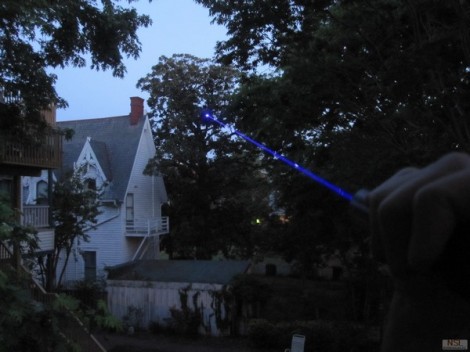![ld421650-powerex-new[1]](http://hackadaycom.files.wordpress.com/2012/05/ld421650-powerex-new1.jpg)
Most of you already know what a diode is, but how much do you really know about the device?
dev
![ld421650-powerex-new[1]](http://hackadaycom.files.wordpress.com/2012/05/ld421650-powerex-new1.jpg)
Most of you already know what a diode is, but how much do you really know about the device?

The boys over at North Street Labs built a handheld burning laser and made it look super simple. Well it’s not. We don’t think it’s hard either, but the only reason it looks so easy is because they really know what they’re doing.
The first step was to source the best parts for the application. They’re using a handheld flashlight body which is small but still leaves plenty of room for the components. Next they ordered a quality lens made for the wavelength of the diode, as well as a prefab driver board.
Now the real build starts. They hit the metal lathe and machined a housing for the diode out of some aluminum stock. To marry the parts together they applied some thermal paste, and used a wrench socket to protect the diode from the pressure the vice jaws exert. It slid into place and the whole thing fits perfectly in the flashlight housing. The project wouldn’t be complete without video proof of it burning stuff. You’ll find that after the break.
When you get down to it, solar cells aren’t much different from the diodes and transistors in your parts drawers or inside your beloved electronics. They’re both made of silicon or some other semiconductor, and surprisingly can produce electricity in the presence of light. Here’s two semiconductors-as-solar panel projects that rolled into the tip line over the past few days.
[Steven Dufresne] cut open a 2N3055 power transistor to expose the semiconductor material to light. In full sunlight, he was able to produce 500 millivolts and 5.5 milliamps. In other words, he’d need around 5000 of these transistors wired up to turn on a compact fluorescent light bulb. A small calculator has a much lower power requirement, so after opening up five transistors he was able to make a solar-powered calculator with a handful of transistors.
[Sarang] was studying solar cells and realized a standard silicon diode is very similar; both are p-n junctions and the only real difference is the surface area. He connected a 1N4148 to a multimeter and to his surprise it worked. [Sarang] is able to get about 150 millivolts out of his diode with the help of a magnifying glass. While he doubts his diode is more efficient than a normal solar cell, he thinks it could be useful in low-cost, low power applications. We’re thinking this might be useful as a high-intensity light detector for a solar cooker or similar.
After the break, you can check out the videos [Steven] and [Sarang] put up demonstrating their solar cells.

[Udo Klein] was working with some 1N4148 transistors and was interested in the specs relating to their performance at different temperatures. The forward voltage actually changes quite a bit depending on temperature and wondered if this could be reliably measured. He hacked his own LED shield for the Arduino to use as a 1×20 thermal imaging system.
The screenshot above is mapping the voltage measurements from a row of diodes (see the video after the break to get the full picture). He’s holding an ice pack over the row of diodes and observing the change. The on-screen display is facilitated by a Python script which is pulling data from the Arduino. Since there aren’t enough analog inputs to read all twenty diodes separately they have been multiplexed. Four I/O pins each enable five of the diodes, readings are taken with five analog inputs before moving on to the next set.
What can this be used for? That is precisely the wrong question… sometimes you’ve just got to go where your curiosity takes you. [Read more…]
Copyright © 2025 · Genesis Framework · WordPress · Log in
Recent Comments